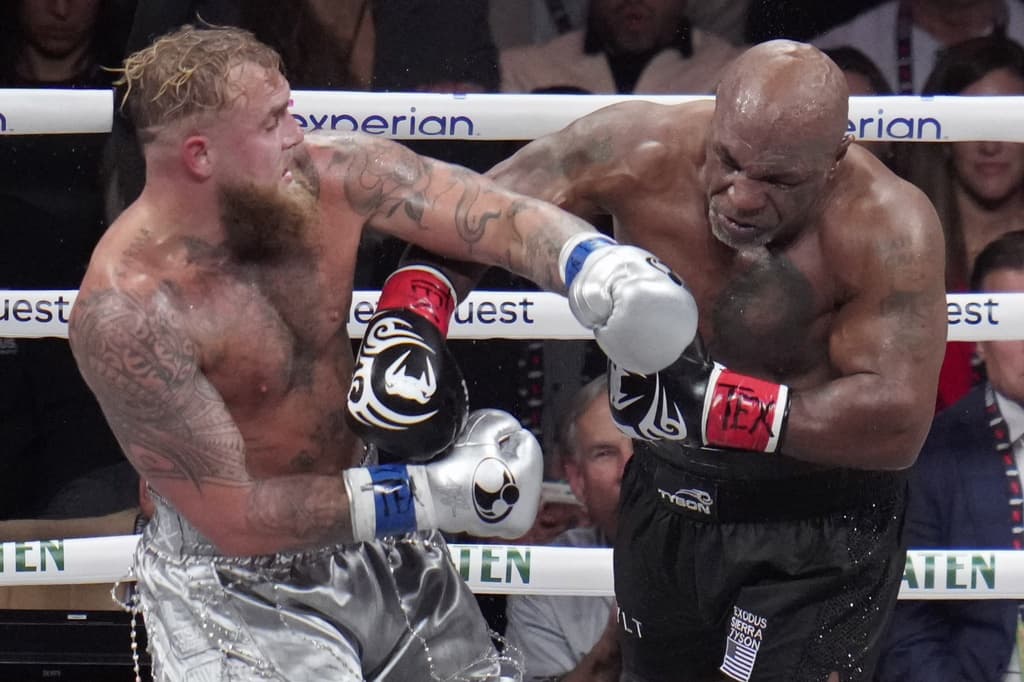Fears of brain injuries has deterred many parents and their children from choosing to play football.
After years of publicity about how dangerous football can be, football enrollment has declined 6.6 percent in the past decade, according to data from the National Federation of State High School Associations.
Those who still play the sport are increasingly low-income students.
Over the past five years in Illinois, the proportion of high school football rosters filled by low-income boys rose nearly 25 percent – even as the number of players in the state has fallen by 14.8 percent over the same period, according to a story out this week from HBO's Real Sports.
This doesn't surprise Albert Samaha, a BuzzFeed News investigative reporter and author of "Never Ran, Never Will: Boyhood and Football in a Changing American Inner City."
Samaha spent two seasons embedded with the Mo Better Jaguar football program in Brownsville, a small Brooklyn neighborhood overburdened with poverty and crime. The program is for children ages 7-13, who are all aware of the risks of playing football, but play anyway.
"The reason that football is so valuable to them is the fact that it's still the sport that that's the most popular in America, that is getting the most money from high schools and colleges in America," Samaha said in an interview with NPR's Michel Martin on All Things Considered. "At a time when the educational gap continues to widen between low income, particularly black and brown kids, and higher income white kids, football offers a path to upward mobility that is not really available through any other extracurricular activity."
Many of the 10, 11, and 12-year olds who Samaha reported on told him that they were playing football not just for the chance of getting a college scholarship, but also for the chance to get financial aid for top private high schools in New York City.
Their hopes were reinforced by private high school coaches who attended Mo Better Jaguar football games and told the boys that if they played well enough, they could get a scholarship, and with that scholarship, avoid the student debt and poverty that so many in generations before them faced.
"Kids feel pressured to play football, it's rooted in the problem of education," Samaha said.
So why do so many low-income students choose football, and not a different, less dangerous, sport? Why not try for a baseball scholarship? Or soccer?
It's a numbers game.
The odds of getting a college scholarship for a man playing football at a NCAA or NAIA school is 43:1, according to MarketWatch, and football offers far more athletic scholarships at NCAA and NAIA schools than any other sport, numbering close to 26,000 per year.
At the high school level, schools are investing big money into football as well. One high school in Katy, Texas, just outside of Houston, recently spent over 70 million dollars on a new state-of-the-art football stadium.
"As long as the money is going into this activity this is where the opportunities are going to be," Samaha said.
Additionally, unlike some sports, football has a relatively low barrier of entry of participation, because there are so many positions that rely on differing capabilities.
"Football unlike other sports doesn't require you to be a certain size or certain height," Samaha said. "You can sort of play it whether you're overweight whether you're underweight. It's sort of the most in some ways meritocratic of all the sports available for these opportunities."
But with the opportunity to achieve affordable higher education, playing football also brings the risk of long-term brain damage.
A report by the Journal of the American Medical Association, published in 2017, showed that in a study of 111 brains of deceased former National Football League players, 110 had evidence of chronic traumatic encephalopathy (CTE).
CTE has been linked with repeated blows to the head, and can result in behavioral changes and cognitive decline.
Some of the behavioral side effects include difficulty with impulse control, aggression, emotional volatility and rage behavior. Extensive signs of CTE has been found in the brains of former NFL stars such as former New England Patriots tight end Aaron Hernandez, who hung himself in a prison cell while serving a life sentence for murder.
It's not just NFL players though. The same study showed that in the 202 brains examined across all levels of play, nearly 88 percent of all the brains, 177, had CTE.
Low-income students who choose to play football know about these risks, Samaha said, but have factored it into a bigger risk assessment calculation. For them, playing football is still worth the risk, because they're trying to avoid other dangers.
"It's a luxury to worry about these long-term, sort of abstract damages to these kids and their parents," Samaha said. "The risks are all around them — the risks of not going to high school, the risks of not making it into college, or the risks of of falling into kind of the street path that they'd seen other people around them fall into."
Football is their ticket out. But Samaha argues that America needs to reckon with the broader ethical implications of the sport.
"America's dual commitments to football and racial oppression have meant that the danger of the sport will increasingly fall on the shoulders of low income black and brown kids," Samaha said.
Meanwhile, he says, the money from the sport is mainly going to white coaches and white owners.
Samaha likened the disparity between the people who participate in football and the people who benefit to a "gladiatorial dichotomy."
Meanwhile, there has been no real decline in viewership for the sport. A 2017 Gallup poll showed that football still leads as America's favorite sport, with 37 percent of U.S. adults choosing it as their favorite sport to watch.
Millions are expected to watch the Super Bowl on Sunday, including Samaha.
"I feel guilty about it but I watch every Sunday," he said. "I don't know how to reckon with that."
Sunday night, as millions look on, the players will inevitably clash in tangled lines of bodies on the field, perhaps risking a lot for a few yards — risking more to win.
9(MDEyMDcxNjYwMDEzNzc2MTQzNDNiY2I3ZA004))







